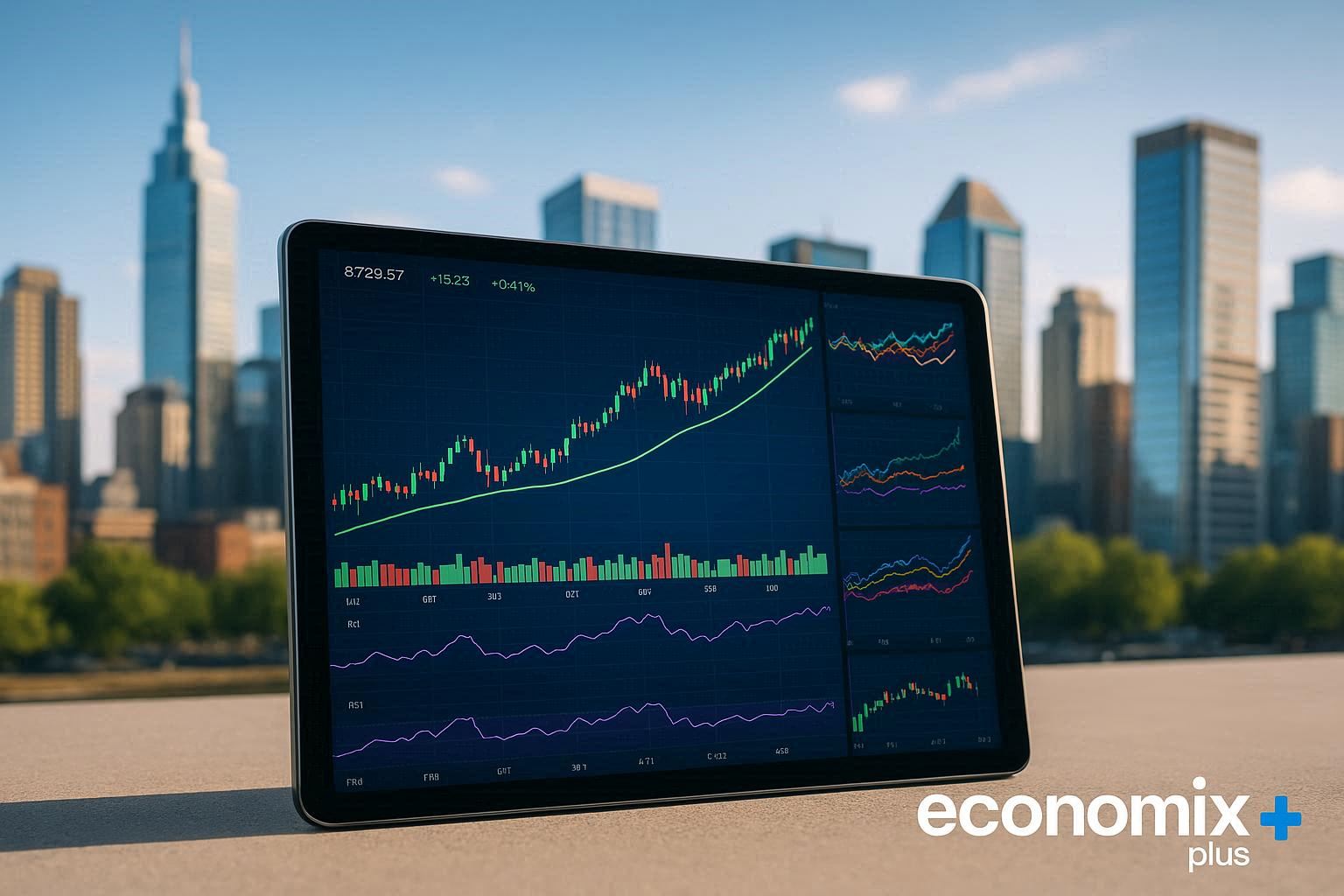The world of digital assets has evolved significantly, transforming from an obscure experiment into a major asset class with a combined market capitalization of nearly $3 trillion.
As you explore the potential of cryptocurrency as a wealth-building vehicle, you’re entering a space characterized by both spectacular success stories and sobering failures.
The market volatility and the various strategies for investment in digital assets raise a crucial question: can this asset class be your path to financial freedom?
Key Takeaways
- Cryptocurrency has become a significant asset class with a nearly $3 trillion market capitalization.
- Various strategies can be employed for wealth creation through digital assets.
- The market is volatile, with both success stories and failures.
- Understanding the fundamental technologies driving cryptocurrency value is crucial.
- Navigating the risks inherent in digital asset investing is essential.
The Digital Gold Rush: Understanding the Cryptocurrency Landscape
The cryptocurrency landscape is rapidly evolving, presenting a unique opportunity for investors to get in on the ground floor of a potentially lucrative market. As we explore this digital frontier, it’s essential to understand the factors driving its growth and the potential it holds for those willing to take the plunge.
Evolution of Cryptocurrency Since Bitcoin’s Launch
Since the inception of Bitcoin in 2009, the crypto space has expanded exponentially. From a single cryptocurrency to now thousands, the diversity in the crypto market caters to various investment strategies and risk appetites. This evolution has transformed cryptocurrency into a recognized asset class, attracting both retail and institutional investors.
The journey from Bitcoin to the current plethora of digital assets has not been straightforward. It has been marked by innovation, with the introduction of smart contracts through Ethereum, and by challenges, including regulatory hurdles and security concerns. Despite these, the crypto community has continued to grow, driven by the potential for high returns and the democratization of investment opportunities.
The Current Market Size and Potential
Today, the global cryptocurrency market is valued at over $2 trillion, with its potential far exceeding current valuations. The market’s size and its growth trajectory are influenced by factors such as adoption rates, technological advancements, and regulatory developments. As crypto continues to mature, it is poised to play a more significant role in the global financial landscape.
The potential of cryptocurrency to get rich is a narrative that has captivated many. While it’s true that early adopters have seen substantial returns, it’s crucial to approach this market with a balanced perspective, understanding both the opportunities and the risks involved.
Why Cryptocurrency Has Captured Investors’ Attention
So, why has crypto captured the attention of investors worldwide? Here are a few key reasons:
- Cryptocurrency offers asymmetric return potential, with early adopters seeing returns exceeding 1,000,000%.
- The narrative of digital scarcity in an era of unlimited money printing has attracted investors concerned about inflation.
- Crypto provides 24/7 market access, fractional ownership, and permissionless participation, democratizing investment opportunities.
- The technology’s potential to disrupt traditional finance and create new economic models has captured the imagination of forward-thinking investors.
For many, cryptocurrency represents a once-in-a-generation opportunity to be part of a transformative technology, akin to investing in internet companies in the early 1990s. As the crypto landscape continues to evolve, it remains a compelling asset class for those looking to diversify their portfolios and potentially get rich in the process.
How Cryptocurrency Works: A Beginner’s Guide
As you explore the world of cryptocurrency, it’s essential to grasp the underlying technology that powers it. Cryptocurrency is a digital or virtual currency that uses cryptography for security and is decentralized, meaning it’s not controlled by any government or financial institution.
Blockchain Technology Explained Simply
At the heart of most cryptocurrencies is blockchain technology, a decentralized ledger that records transactions across a network of computers. This technology ensures the integrity and transparency of transactions, making it difficult for a single entity to manipulate the data. Blockchain is maintained by a network of nodes, rather than a single central authority, enhancing its security and reliability.
Decentralization: The Core Innovation
Decentralization is a key feature of cryptocurrency, allowing for peer-to-peer transactions without the need for intermediaries like banks. This decentralization is achieved through the use of blockchain technology, enabling a network of computers to verify transactions and maintain the integrity of the ledger.
Types of Cryptocurrencies and Their Functions
Cryptocurrencies can be categorized into several types based on their functions. For instance, Bitcoin is primarily a store of value and a medium of exchange, often referred to as “digital gold.” Other cryptocurrencies, like Ethereum, offer additional functionalities such as smart contracts, which are self-executing contracts with the terms of the agreement directly written into code. There are also meme coins like Dogecoin, which have gained popularity due to their community support, and stablecoins like Tether (USDT), which are pegged to the value of a traditional asset, such as the US dollar.
Understanding these different types of cryptocurrencies and their uses is crucial for navigating the crypto market. Whether you’re investing in a cryptocurrency as a long-term asset or using it for transactions, knowing how it works can help you make informed decisions.
Major Cryptocurrencies Worth Knowing
As you explore the world of cryptocurrency, it’s essential to understand the major players that are shaping the market. The cryptocurrency landscape is diverse, with various projects offering unique features and advantages. In this section, we’ll delve into some of the most notable cryptocurrencies that you should be aware of.
Bitcoin (BTC): The Original Cryptocurrency
Bitcoin is the pioneering cryptocurrency that has been at the forefront of the digital currency revolution. With its decentralized network and limited supply, Bitcoin has established itself as a store of value and a medium of exchange. If you’re looking to buy Bitcoin, you can do so through various reputable exchanges.

Ethereum (ETH): Beyond Digital Currency
Ethereum is more than just a cryptocurrency; it’s a programmable blockchain that enables the creation of decentralized applications (dApps). With its smart contract functionality, Ethereum has given rise to a new wave of blockchain-based projects. You can buy Ethereum through online exchanges that support ETH trading.
Other Notable Cryptocurrencies
Beyond Bitcoin and Ethereum, there are several other cryptocurrencies worth noting. Solana (SOL), for instance, is known for its high-speed transactions and low fees, making it an attractive platform for meme coins and NFTs. Ripple (XRP) is designed for efficient international money transfers, targeting the remittance market. Dogecoin (DOGE), although initially created as a satirical commentary, has gained a significant following among speculators.
- Solana has emerged as a high-performance blockchain focused on scalability, offering transaction speeds of up to 65,000 per second with minimal fees.
- Ripple and its associated cryptocurrency XRP aim to replace the outdated SWIFT system with faster, cheaper cross-border payment solutions.
- Meme coins like Dogecoin have achieved remarkable market capitalizations through community enthusiasm and social media influence.
These cryptocurrencies are part of a broader ecosystem that is constantly evolving. As you explore the crypto market, it’s crucial to stay informed about the projects and their potential.

Can Cryptocurrency Really Make You Rich?
The allure of cryptocurrency lies in its potential to generate substantial wealth, but the question remains: can it really make you rich? As we explore this topic, it’s essential to understand the historical context, the current market dynamics, and the factors that influence the cryptocurrency market.
Historical Returns and Success Stories
Cryptocurrency has delivered extraordinary returns for some investors. For instance, early adopters of Bitcoin have seen their investments grow exponentially. The key to their success often lies in their ability to withstand market volatility and hold onto their assets during downturns.
Many success stories in the crypto space are attributed to investors who entered the market during bear phases and accumulated assets at depressed prices. These investors were then rewarded with significant returns during subsequent bull runs. Understanding the cyclical nature of the crypto market is crucial for investors looking to replicate such success.

Realistic Expectations vs. Hype
While the potential for high returns is enticing, it’s crucial for investors to maintain realistic expectations. The cryptocurrency market is known for its hype cycles, where prices surge based on speculation and then correct sharply. Investors must distinguish between the hype and the underlying fundamentals of a cryptocurrency.
To navigate this, investors should focus on the intrinsic value of a cryptocurrency, its use case, and the team behind it. This approach helps in making informed decisions rather than getting caught up in market euphoria.
The Role of Timing and Market Cycles
Timing plays a critical role in crypto investing. The market operates in pronounced cyclical patterns, with major bull runs typically occurring every four years, coinciding with Bitcoin’s “halving” events. Investors who understand these cycles can position themselves for significant gains.
Cryptocurrency market cycles are more extreme than traditional markets, with assets often gaining 10-100x during bull markets and losing 80-95% of their value during bear markets. By understanding these patterns, investors can develop counter-cyclical strategies, accumulating during periods of maximum pessimism and taking profits during euphoria.
| Investment Strategy | Bull Market | Bear Market |
|---|---|---|
| Counter-Cyclical | Take Profits | Accumulate Assets |
| Trend Following | Invest | Withdraw |
In conclusion, while cryptocurrency has the potential to make you rich, it’s not without its risks. Understanding historical returns, maintaining realistic expectations, and timing the market correctly are crucial for success in the crypto space.
Investment Strategies: HODLing for Long-Term Growth
To maximize returns in the cryptocurrency market, investors should consider long-term HODLing strategies. This approach has proven successful for many investors who have held onto their assets through market fluctuations.
The Philosophy Behind “HODL”
The term “HODL” originated from a misspelling of “hold” in a cryptocurrency forum post. It has since become a rallying cry for investors who believe in the long-term potential of their crypto assets. HODLing is about conviction and patience, as it requires investors to weather market downturns and avoid making impulsive decisions based on short-term price movements.

Dollar-Cost Averaging Approach
A key investment strategy that complements HODLing is dollar-cost averaging (DCA). This involves investing a fixed amount of money at regular intervals, regardless of the market’s performance. DCA helps reduce the impact of volatility and timing risks, making it easier for investors to build their crypto portfolios over time.
Setting Realistic Timeframes for Returns
Understanding the time it takes for cryptocurrency investments to mature is crucial. Historical data suggests that holding through a complete market cycle (approximately 4 years) has almost always resulted in positive returns for Bitcoin investors. Setting realistic timeframes means acknowledging that cryptocurrency adoption follows an S-curve pattern, similar to internet adoption, with early volatility giving way to more stable growth as the technology matures.
| Investment Strategy | Description | Timeframe |
|---|---|---|
| HODLing | Long-term holding of crypto assets | Multi-year to decade-long |
| Dollar-Cost Averaging | Regular investment of a fixed amount | Ongoing, with regular intervals |
“The crypto market is still in its early stages, and those who invest with a long-term perspective are likely to be rewarded.”
By adopting a HODLing strategy and understanding the importance of time in the market, investors can better navigate the cryptocurrency landscape and potentially achieve significant returns on their investments.
Active Trading: Capitalizing on Market Volatility
The cryptocurrency market’s inherent volatility presents both risks and opportunities for active traders. To navigate this landscape effectively, it’s crucial to understand the different strategies and tools available.
Day Trading vs. Position Trading
Active traders in the crypto market often employ either day trading or position trading strategies. Day trading involves making multiple trades within a single day, taking advantage of the market’s intraday fluctuations. In contrast, position trading involves holding positions for longer periods, often days or weeks, to capitalize on larger market movements.
Each approach has its advantages and challenges. Day trading in the crypto market requires a deep understanding of market dynamics and the ability to make quick decisions to maximize money. Position trading, on the other hand, demands patience and a strong grasp of longer-term market trends, which can lead to successful crypto projects and ways to get rich crypto.

Technical Analysis Basics for Crypto
Technical analysis is a critical tool for crypto traders, enabling them to predict future price movements based on historical data. Key components include chart patterns, indicators, and trend analysis.
- Chart patterns help traders identify potential reversals or continuations in price trends.
- Indicators such as Moving Averages and RSI provide insights into market momentum and potential entry or exit points.
- Trend analysis allows traders to understand the broader market direction, aiding in decision-making.
Risk Management for Traders
Effective risk management is crucial for sustainable trading. Professional traders typically risk only 1-2% of their total portfolio on any single trade. Strategies include:
- Position sizing based on volatility to maintain consistent risk exposure.
- Using stop-loss orders to limit potential losses.
- Taking partial profits at predetermined targets to manage risk-reward ratios.
By adopting these strategies, traders can better navigate the volatile crypto market and potentially achieve their investment goals.
Cryptocurrency Exchanges: Where to Buy and Sell
Navigating the world of cryptocurrency exchanges is a crucial step in your crypto journey. With numerous options available, selecting the right platform can be overwhelming. You need to consider several factors, including security, fees, and the range of cryptocurrencies offered.
Centralized Exchanges: Coinbase, Binance, and Others
Centralized exchanges like Coinbase and Binance are popular among traders due to their user-friendly interfaces and robust security measures. When choosing a centralized exchange, consider factors such as trading fees, security features, and the variety of cryptocurrencies available. Coinbase, for example, is known for its ease of use, making it a great starting point for beginners. Binance, on the other hand, offers a wide range of cryptocurrencies and advanced trading options.

Decentralized Exchanges: Uniswap and Beyond
Decentralized exchanges (DEX) like Uniswap provide greater privacy and access to newer tokens, but they often come with fewer user protections. When using a DEX, it’s essential to understand the risks involved and take necessary precautions to secure your assets. DEXs operate on blockchain technology, allowing for peer-to-peer transactions without intermediaries.
Security Considerations When Choosing an Exchange
Exchange security should be your primary consideration when selecting a platform. Research the exchange’s history of security incidents, insurance policies, and the percentage of assets held in cold storage. Enable two-factor authentication immediately upon creating an account, and consider using a non-custodial crypto wallet for storing larger holdings. Additional security measures include withdrawal address whitelisting and understanding the exchange’s trading policies.
By being informed and cautious, you can navigate the world of cryptocurrency exchanges safely and effectively. Always prioritize security and stay up-to-date with the latest developments in the crypto space.
Passive Income Opportunities in Crypto
Cryptocurrency offers several ways to earn passive income, and understanding these opportunities is crucial for maximizing your returns. As the crypto market continues to evolve, investors are looking beyond traditional trading to generate revenue from their digital assets.
Staking: Earning Rewards While Holding
Staking involves holding a certain amount of cryptocurrency in a wallet or on an exchange to support the operation of a blockchain network. In return for staking your coins, you receive rewards, typically in the form of additional cryptocurrency. This method is particularly popular for proof-of-stake (PoS) cryptocurrencies, where stakers help validate transactions and secure the network. Staking can provide a relatively stable source of passive income, with annual returns varying depending on the cryptocurrency and network conditions.
Yield Farming and Liquidity Provision
Yield farming and liquidity provision are more advanced strategies that involve providing liquidity to decentralized finance (DeFi) protocols. By depositing your assets into liquidity pools, you enable others to borrow or trade, and in return, you earn a portion of the transaction fees. Yield farming can be highly rewarding but also comes with significant risks, including market volatility and smart contract vulnerabilities. It’s essential to research and understand the protocols you’re investing in to mitigate these risks.
Running Master Nodes for Passive Income
Running a master node is another way to earn passive income in the crypto space. Master nodes are servers that support certain blockchain networks by performing critical functions beyond basic transaction validation. To operate a master node, you typically need to lock up a significant amount of the network’s cryptocurrency as collateral. In return, you receive regular rewards, often with higher annual returns than traditional staking. However, running a master node requires technical expertise and a substantial initial investment.
As highlighted by a recent report, “master nodes represent a more advanced form of network participation than basic staking, requiring operators to run dedicated servers that perform critical network functions.” The financial requirements for running master nodes can vary significantly, from several thousand dollars for smaller projects to hundreds of thousands for established networks. In exchange for this commitment, master node operators typically receive higher rewards and often gain governance rights within their respective networks.
In conclusion, earning passive income in crypto can be achieved through various methods, each with its own set of benefits and risks. By understanding these opportunities and choosing the strategies that best fit your investment goals and risk tolerance, you can enhance your overall returns in the cryptocurrency market.
Mining Cryptocurrency: Is It Still Profitable?
As the crypto market continues to evolve, the question on every miner’s mind is: can mining still be profitable? Cryptocurrency mining, a process that involves validating transactions on a blockchain network, has been a crucial part of the crypto ecosystem since its inception.
Hardware Requirements and Initial Investment
To start mining, you’ll need specialized hardware designed specifically for cryptocurrency mining. The most common type of mining equipment is the Application-Specific Integrated Circuit (ASIC) miner. Top ASIC miners include Bitmain Antminer and Whatsminer. The initial investment in mining hardware can be substantial, with prices ranging from a few hundred to several thousand dollars.

Energy Costs and Environmental Considerations
Mining cryptocurrency is an energy-intensive process, and the cost of electricity is a significant factor in determining mining profitability. Miners often seek locations with low electricity costs to maximize their profits. Additionally, the environmental impact of cryptocurrency mining has become a growing concern, with many calling for more sustainable mining practices.
Mining Pools vs. Solo Mining
Many miners join mining pools, combining their computational power with others to earn more consistent, though smaller, rewards. Solo mining offers the potential for full block rewards but comes with an extremely low probability of success for individual miners given the massive network hashrates of established cryptocurrencies.
- Mining pools allow participants to combine their computing power and share rewards proportionally.
- Different pool payment structures affect miner profitability and risk.
- Pool fees typically range from 1-3% of mining rewards.
The Bitcoin Maximalist Perspective
Bitcoin maximalism has emerged as a significant investment strategy within the cryptocurrency landscape. This approach involves focusing exclusively on Bitcoin, the original and most well-known cryptocurrency, rather than diversifying across multiple digital assets.
Why Some Investors Focus Solely on Bitcoin
Investors are drawn to Bitcoin maximalism for several reasons. Primarily, Bitcoin’s first-mover advantage and its established position as a store of value contribute to its appeal. The scarcity of Bitcoin, capped at 21 million, is a significant factor, as it potentially drives value upward as demand increases. To put this into perspective, with approximately 8 billion people on Earth, this means about 0.0025 BTC per person, making it a highly sought-after asset. You can acquire an entire human’s worth of this emerging monetary standard for the digital age for just $100, highlighting its accessibility and potential for growth.
Bitcoin’s Scarcity and Long-term Value Proposition
The scarcity of Bitcoin is a crucial aspect of its value proposition. With a fixed supply, Bitcoin is immune to the inflationary pressures that can devalue other assets. This scarcity, combined with its growing adoption, contributes to its long-term value. As more investors turn to Bitcoin as a digital gold, its value is likely to appreciate, driven by increasing demand against a static supply.
Comparing Bitcoin to Other Investment Assets
When comparing Bitcoin to other investment assets, its performance over the past decade stands out. Bitcoin has outperformed major asset classes, including stocks, real estate, and precious metals, despite its volatility. The table below highlights this comparison:
| Asset Class | 10-Year Return | Volatility |
|---|---|---|
| Bitcoin | High (>100% CAGR) | High |
| Stocks | Single-digit | Medium |
| Real Estate | Single-digit | Low-Medium |
| Precious Metals | Low | Low |
For more insights on investing in digital assets, you can visit this resource.
The Bitcoin maximalist perspective offers a compelling investment strategy, leveraging Bitcoin’s unique properties and historical performance. As the cryptocurrency landscape continues to evolve, understanding the rationale behind focusing on Bitcoin can help investors make informed decisions.
Major Risks in Cryptocurrency Investing
As you venture into the world of cryptocurrency, you’re likely to encounter various risks that can impact your investments. Understanding these risks is crucial to making informed decisions and protecting your assets.
Market Volatility and Price Swings
The cryptocurrency market is notorious for its volatility, with prices often experiencing significant swings within short periods. This volatility can result in substantial gains, but it also poses a considerable risk to your investments. As an investor, it’s essential to be prepared for the possibility of rapid price changes.
Security Threats and Scams to Avoid
The crypto space is not immune to security threats and scams. You must be cautious when dealing with exchanges, wallets, and other platforms to avoid falling victim to phishing attacks, Ponzi schemes, and other malicious activities. Always use reputable exchanges and enable two-factor authentication to enhance security.
- Use strong, unique passwords for all accounts.
- Be wary of unsolicited investment opportunities that promise unusually high returns.
- Regularly update your software and firmware to protect against known vulnerabilities.
Regulatory Uncertainty and Compliance Issues
Cryptocurrency investors face the challenge of regulatory uncertainty, as government policies can change suddenly and significantly impact the market. For instance, China’s2021 crypto ban caused a market-wide sell-off, demonstrating the potential consequences of regulatory actions. Staying informed about evolving legal frameworks is crucial to navigating these risks.
To mitigate these risks, it’s essential to stay up-to-date with the latest regulatory developments and ensure compliance with relevant laws and regulations. This includes understanding tax implications, anti-money laundering requirements, and securities laws that may apply to your cryptocurrency investments.
Protecting Your Crypto Assets
As you navigate the world of cryptocurrency trading, protecting your assets becomes a top priority. With the increasing value of digital currencies and various projects emerging, the importance of securing your investments cannot be overstated. Today, many are looking for ways to get rich crypto, including exploring meme coins and staking rewards.
Crypto Wallets: Hot vs. Cold Storage
Crypto wallets are essential for storing, sending, and receiving cryptocurrencies. They come in two primary forms: hot wallets and cold storage. Hot wallets are connected to the internet, offering convenience but also vulnerability to cyber threats. Cold storage, on the other hand, is offline, providing a more secure environment for your assets.

Two-Factor Authentication and Security Best Practices
Enhancing security is crucial for protecting your crypto assets. Two-factor authentication (2FA) adds an extra layer of security to your accounts. Best practices include using strong, unique passwords and keeping your software up to date.
Backup Strategies for Private Keys
Proper backup of private keys or recovery seeds is critical, as lost keys mean permanently lost access to funds. The standard approach involves writing down the 12-24 word recovery seed phrase on paper or metal storage devices, stored in multiple secure locations.
- Metal backup solutions like Cryptosteel or Billfodl offer protection against environmental damage.
- Multisignature wallets provide advanced security by requiring multiple keys to authorize transactions.
- Inheritance planning for cryptocurrency requires special consideration, with solutions ranging from trusted instructions for heirs to commercial services.
By implementing these security measures, you can significantly reduce the risk associated with holding cryptocurrencies. It’s essential to stay informed and adapt to the evolving security landscape to protect your crypto assets effectively.
Tax Implications of Cryptocurrency Earnings
As a cryptocurrency investor, understanding the tax implications of your earnings is essential. The IRS considers cryptocurrency as property, not currency, which affects how gains and losses are reported.
How Cryptocurrency is Taxed in the United States
In the U.S., cryptocurrency is subject to capital gains tax. This means that any profit made from selling cryptocurrency is taxable, while losses can be deducted. The tax rate depends on whether the gain is considered short-term (held for one year or less) or long-term (held for more than one year).
Reporting Requirements for Different Activities
Various cryptocurrency activities have different reporting requirements. For instance, trading cryptocurrencies is considered a taxable event, and each trade must be reported. Similarly, yield farming and liquidity provision can create taxable events, even if no fiat currency is received.
Tools for Tracking Crypto Transactions for Tax Purposes
Cryptocurrency tax software like CoinTracker, Koinly, and TaxBit has emerged to simplify the complex reporting requirements. These tools automatically calculate gains and losses across multiple exchanges and wallets, generating tax forms that can be used for filing.
Some of the key features of these tools include:
- API and CSV imports for tracking transactions across exchanges and wallets
- Identification methods (FIFO, LIFO, specific identification) to optimize tax liability
- Support for DeFi protocols like Uniswap, Aave, and Compound

For investors with significant holdings or complex transaction histories, professional tax guidance from accountants specializing in cryptocurrency taxation is advisable. As the regulatory landscape continues to evolve, staying informed and compliant is crucial.
Common Mistakes New Crypto Investors Make
As you navigate the cryptocurrency market, it’s essential to be aware of the common pitfalls that can lead to significant financial losses. The cryptocurrency space is rapidly evolving, and new investors are often drawn in by the promise of getting rich quickly. However, without proper knowledge and caution, investors can fall prey to various mistakes that can have serious consequences.
FOMO-Based Investing and Emotional Decisions
Fear of Missing Out (FOMO) is a significant driver of investment decisions in the crypto market. Many new investors make the mistake of investing based on emotions, rather than a well-thought-out strategy. This can lead to impulsive decisions, resulting in buying into projects at their peak, only to see their value plummet. To avoid this, it’s crucial to develop a rational investment strategy and stick to it, rather than making emotional decisions based on market volatility.
Overinvesting and Poor Risk Management
Overinvesting is another common mistake new crypto investors make. Investing more than you can afford to lose can lead to financial ruin if the market turns against you. It’s essential to manage your risk by diversifying your portfolio and setting stop-loss orders. This will help you limit your losses if a particular investment doesn’t perform as expected.
Falling for Scams and “Get Rich Quick” Schemes
The cryptocurrency space is plagued by scams and fraudulent projects designed to exploit newcomers’ lack of experience and desire for quick profits. Common scam types include fake ICOs/token sales, Ponzi schemes, and fake exchanges. To avoid falling prey to these scams, it’s essential to conduct thorough research on any project before investing. Be wary of guaranteed returns, pressure to act quickly, and promises of insider information. A skeptical mindset and thorough research can help you avoid these pitfalls.
| Scam Type | Description | Red Flags |
|---|---|---|
| Fake ICOs/Token Sales | Non-existent projects with fake promises | No clear project roadmap, anonymous teams |
| Ponzi Schemes | Unsustainable returns promised | Guaranteed returns, pressure to invest quickly |
| Fake Exchanges | Exchanges that steal deposited funds | Poor website design, lack of transparency |
By being aware of these common mistakes and taking steps to avoid them, you can increase your chances of success in the cryptocurrency market. Remember, getting rich quickly is not a realistic expectation; instead, focus on making informed investment decisions and managing your risk effectively.
Building a Balanced Crypto Portfolio
To succeed in crypto investing, you need a balanced portfolio that aligns with your risk tolerance. A well-structured investment strategy is crucial in the volatile cryptocurrency market.
Diversification Strategies Within Crypto
Diversifying your crypto investments can help mitigate risk. Consider spreading your investments across different types of cryptocurrencies, such as:
- Bitcoin and other established cryptocurrencies
- Altcoins with strong use cases
- Tokens from various sectors like DeFi, NFTs, and gaming
This diversification strategy can help you ride out market fluctuations and potentially benefit from the growth of different sectors within the crypto market.
Allocating Only What You Can Afford to Lose
It’s crucial to allocate only what you can afford to lose when investing in crypto. Given the high-risk nature of cryptocurrency investments, it’s essential to:
- Assess your financial situation
- Determine a comfortable investment amount
- Stick to your budget to avoid financial strain
By doing so, you’ll be able to invest in the crypto market without jeopardizing your financial stability over time.
Rebalancing and Taking Profits
Regular portfolio rebalancing and strategic profit-taking are vital components of a successful crypto investment strategy. Rebalancing involves periodically reviewing your portfolio and adjusting the proportions of your investments to maintain your desired asset allocation.
- Implement a time-based rebalancing schedule (e.g., quarterly or annually) to remove emotion from your decisions.
- Consider taking profits during strong market uptrends to reduce risk exposure while maintaining upside potential.
By adopting these practices, you can manage your crypto investments more effectively and make the most of the market opportunities over time.
Conclusion: Is Cryptocurrency Your Path to Wealth?
If you’re looking to get rich in crypto, understanding its potential and pitfalls is crucial. Cryptocurrency represents one of the most significant wealth creation opportunities of our generation, but success requires navigating substantial risks, market volatility, and a complex technological landscape.
The question “Can cryptocurrency make you rich?” has no universal answer—it depends on your entry timing, investment approach, risk management, technical knowledge, and psychological resilience. Historical data suggests that patient, disciplined investors who accumulate quality assets during bear markets and maintain a long-term perspective have the highest probability of significant returns.
The most successful cryptocurrency investors typically share common traits: they conduct thorough research, diversify intelligently, invest only what they can afford to lose, and maintain conviction through market cycles. While crypto offers no guarantees, it provides a unique opportunity to participate in the early stages of a technological revolution that is fundamentally changing how value is stored and transferred in the digital age.
Your cryptocurrency journey should align with your personal financial goals, risk tolerance, and investment timeline—whether that means conservative exposure to established assets like Bitcoin or a more diversified approach across the crypto ecosystem. Regardless of your specific strategy, education remains the most important investment you can make in cryptocurrency, as understanding the technology, market dynamics, and security best practices significantly improves your chances of success in this rapidly evolving space.
In conclusion, if you’re looking to get rich with rich crypto, it’s essential to be informed, patient, and strategic in your approach. The way to success in crypto involves a combination of knowledge, risk management, and the right investment strategy.














